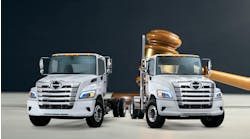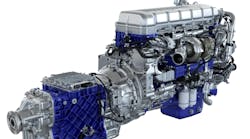Too often fleets take a set-it-and-forget-it approach when it comes to the vehicle specification process. They spend a lot of time finding a spec that works and they stick with it. When it comes time to order a new truck, they just tell the salesperson to copy specs from the last P. O. Some salespeople will take time to go over new features with the customer or suggest they review the spec, but others just say “thanks” and take the order.
I suggest that you take a few minutes before placing an order for a new truck to evaluate your current performance in areas such as component reliability, fuel economy, driver acceptance and resale value. Doing so will help you fine-tune your existing specifications. Oftentimes your specs don’t need a complete revamp, they just need a few tweaks.
It’s also a good idea to check with drivers and technicians to get input about how the truck performs in day-to-day operations and to find out about on-going service issues. Maintenance records are an excellent source of information and can tell you a lot about how current specs are performing in your operation.
When considering specs for engine horsepower/torque, transmission and rear differential ratios (and even tire size) make sure you assess the percentage of time your trucks spend on highway vs. off highway, the grade of the roads, and desired top speed at cruise. For regional applications, wheelbase and turning radius should also be factored in. The goal is to achieve the balance of performance and fuel economy that works best for you.
Keep in mind there are many innovations that can enhance driver performance and retention — given the current driver shortage, any spec that will keep drivers happy is worth at least considering. Things to look at include: automated transmissions (which can reduce driver fatigue) and collision avoidance systems (which enhance driver safety). Over the past decade we have seen continued government mandates that directly affect environmental issues, so you might want to consider adding electronic diagnostic notification software.
Cab configuration and visibility are other areas where you can score points with your drivers. And don’t forget about making the technician’s job easier too — they’re in short supply as well. Ease of access for routine maintenance to under hood components will not only make technicians happy, it will also improve their efficiency.
Ultimately the truck’s specifications should be geared to match your operational needs. Over-specifying can lead to higher initial costs with no improvement on the resale end. Under-specifying will lead to reliability issues, higher maintenance and a lower resale value.
Just like in other areas of life, things are changing rapidly in the trucking industry. A spec that was perfect for you four years ago may no longer be the most efficient spec going forward.
Next time you need to order new trucks, take some time to review your current operations and seek input from drivers and technicians so you can make the little changes that will pay big dividends.


